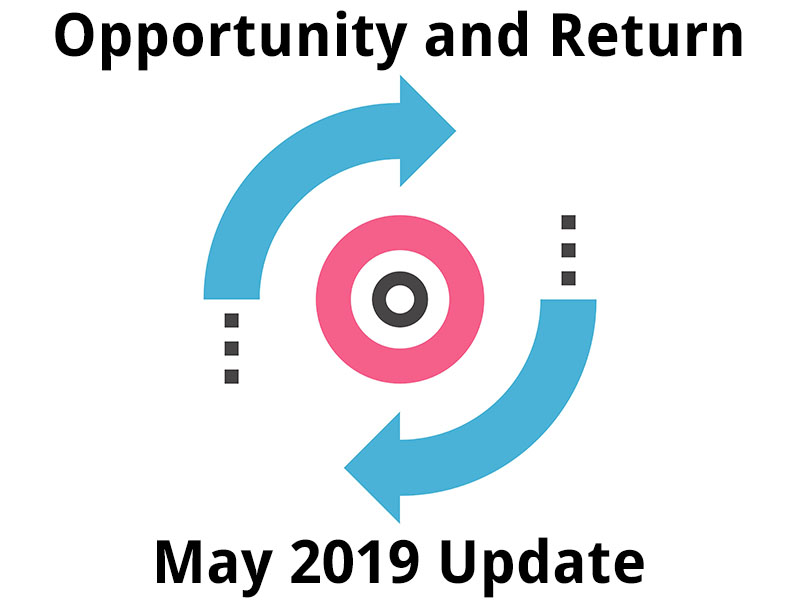After reading about where I’m seeing future problems for debt investments, it would be possible to think I’m pessimistic about the investment outlook for my clients. That couldn’t be further from the truth. On a global basis credit seems quite stretched, yet for an Australian manager opportunities in non-vanilla credit abound. As a general guide, the best opportunities are coming from property and securitisation transactions, but even within those sectors there are things I’m avoiding like the plague.
Take securitisation as an example. Amongst the subordinated tranches of 2018 and 2019 vintage prime residential mortgage backed securities (RMBS) the potential for widespread downgrades is building. Those who peruse the rating agency reports for new transactions will have seen the modelling of what happens when a 10% house price downgrade is applied. Some transactions would be looking at downgrades for AA rated tranches to BBB and A rated tranches to sub-investment grade. Given we have seen Australian house prices fall from the peak by close to 10% now, there are some transactions where the lower tranches are due for material downgrades.
This looks a lot like synthetic CDOs in 2007 when the rating agencies changed their methodologies. The most recently issued CDOs were typically the worst impacted, but the outcome was far from uniform. The rating agencies took considerable time to fully implement the changes, but for an extended period the market was ignoring what was eventually going to happen. There was substantial opportunity for those doing the line by line analysis to sell out of the worst impacted deals and replace them with deals that were more favourably impacted. It was this level of analysis that resulted in all of the CDOs in the enhanced cash portfolio I was managing paying out in full and on time, whilst many other managers suffered substantial principal and interest losses on their CDO investments.
I’m not saying that subordinated tranches of prime RMBS are heading for capital losses, that would require more than a doubling of the unemployment rate to become a realistic possibility. At this stage it’s just a rating downgrade story where the inevitability of rating downgrades for some tranches is clear, but still not being priced in.
What’s also lost in the detail is whilst some prime transactions are heading towards downgrades, non-conforming transactions generally continue to track towards upgrades. Again, the work needs to be done on each tranche in each deal to assess the impact of several factors. These include changes in house prices, subordination levels, the net interest margin, arrears levels, defaults and loss severities. By regularly doing this analysis, I can have confidence that the deals I’m buying for clients will be the better performers in the medium term.
Crossover Credit (BBB/BB ratings) Performance
Many who recommend investing in private debt and sub-investment grade debt sell it as a halfway house between investment grade debt and equities. However, Narrow Road’s crossover credit strategy has done far better than that, having higher returns than the Australian equity index and lower volatility than the Australian fixed interest index. The net return since inception is 10.26%; the higher returns in the early years reflect the ability to buy discounted securities in 2012-2013 and the higher base interest rate component before the RBA cut interest rates from 2015 onwards. The graph below illustrates both the outperformance and persistency of returns.
The outlook for crossover credit remains solid, net returns of 6.50-7.00% are eminently achievable. This range is based on no change in credit spreads or interest rates; the forecast rate cuts from the RBA will bring down this return outlook a little. Credit duration is very low at just over 1 year. This leaves the portfolios very well positioned should a downturn arrive and push credit spreads wider, with capital quickly coming back to be redeployed at lower prices. There is good capacity to deploy meaningful capital in this strategy for all but the largest institutional investors.
Investment Grade Performance
Performance in the investment grade portfolios has been excellent beating the US high yield index and the Australian fixed interest index despite not having the tailwind of falling long term interest rates. As a guide, the Australian 5 year government bond yield has fallen by 0.77% over the measurement period, adding over 4% to returns on the Australian fixed interest index. Should interest rates revert towards historical levels the outperformance for floating rate portfolios like those run by Narrow Road will be substantial. The net return since inception is 5.60% with the volatility of returns far below the US high yield index and the Australian fixed interest index.
The outlook for investment grade portfolios is robust with net returns of 5.00-5.50% likely. Again, this range is based on no change in credit spreads or interest rates. Credit duration is under 1.5 years, substantially containing the risk of material mark to market losses when the next downturn occurs. There is very good capacity to deploy capital in this strategy for all institutional investors.
AAA Only Performance
The AAA only strategy sits in the enhanced cash part of a portfolio, where there is a need for both liquidity and a return above the RBA Cash Rate or the bank bill index. This often expressed as a target return of RBA Cash Rate + 1.50-2.00%, with some credit duration but close to zero interest rate duration. The AAA only securities have delivered a return of 3.69% since inception, almost double the bank bill index return of 1.87% and 2.19% higher than the RBA Cash Rate.
The outlook for the AAA securities is at the top end of the RBA Cash Rate + 1.50-2.00% target range. Credit duration is currently at 1.5 years, substantially reducing the quantum of the typically minimal mark to market movements. There is substantial capacity to deploy capital in this strategy for all institutional investors.

